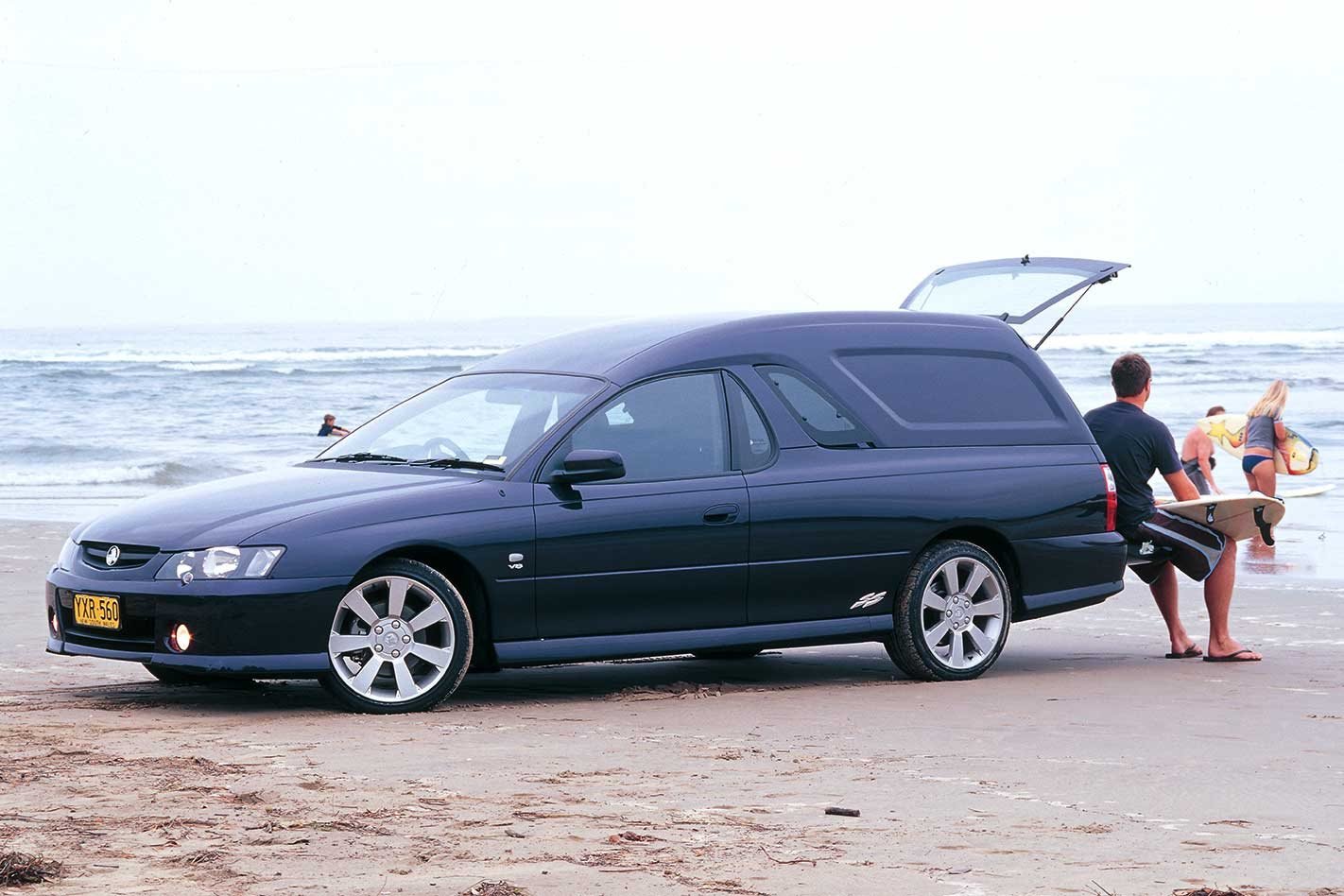In a desperate effort to justify whopping sums or long hours spent on a beloved vehicle, henpecked men have been heard to proclaim that “it’s not just a car, it’s a way of life”.
This feature was originally published in MOTOR’s March 2004 issue
In the case of the panel van, particularly the beerly beloved Holden Sandman, this statement has at least a nodding association with the truth. Surely the van was a way of life for those many surf-loving, soap-fearing types who chose to actually live in their Sandmans.
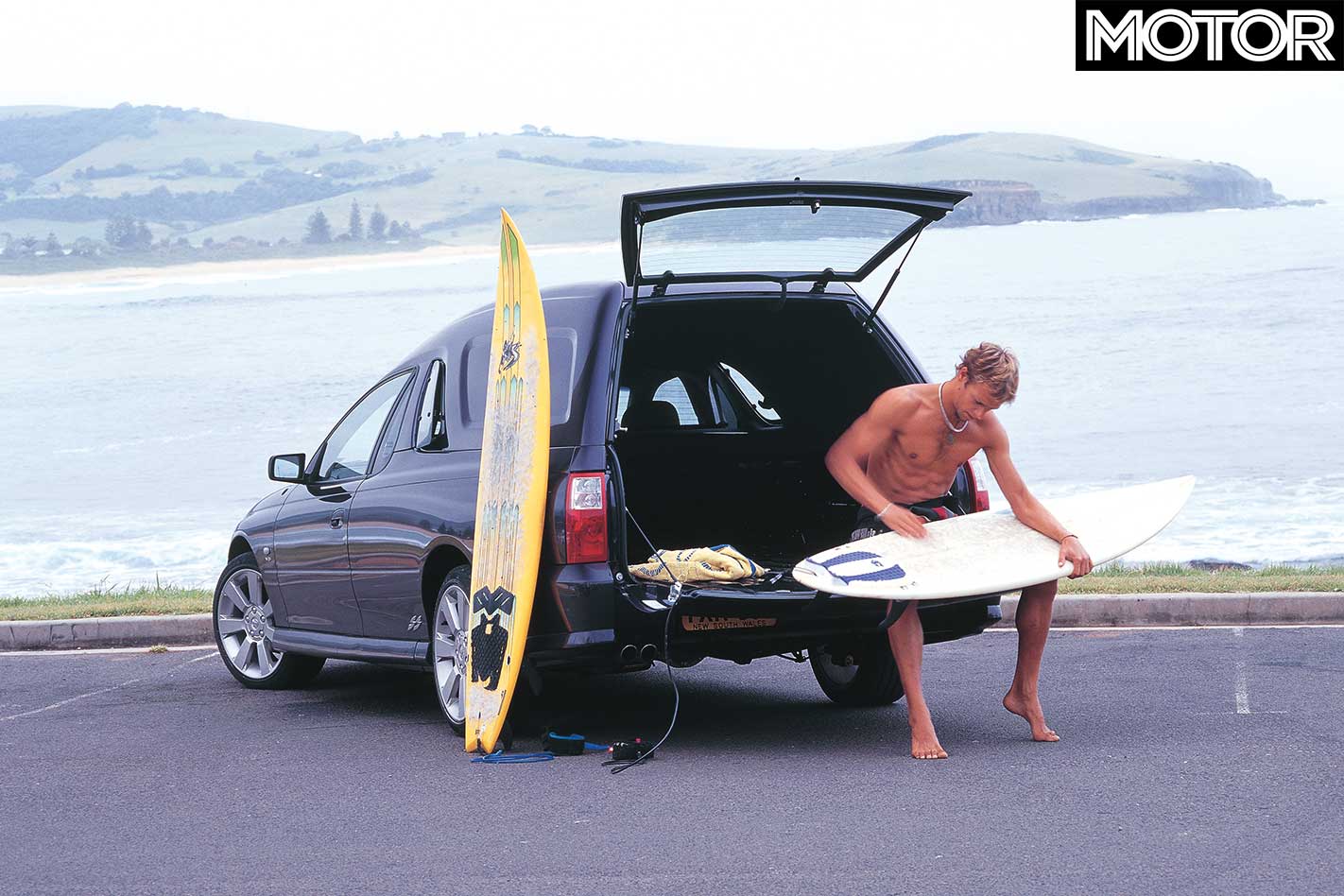
I can proudly say that I used to own a shaggin’ wagon myself. Unfortunately, mine was only a pygmy panel van, otherwise known as a Ford Escort. While it did look about as cool as a mullet at the time, it wasn’t much use for sleeping in – not unless you were double-jointed. And anyone attempting to make the two-backed beast in it was best advised to undertake 12 months of yoga training beforehand.
With the successful return of the Beetle and the MINI, perhaps the return of the panel van should not come as a surprise. But some in society would surely feel that reanimating the Sandman concept was a Frankensteinish undertaking.

A closer look at the new Holden Panel Van, however, reveals that it is, in fact, not quite the monster of old. Instead, Holden has taken the living body of its VY II Ute and grafted on the humpback of the original beast, in the shape of a Holden By Design Canopy, which can be teamed with any Ute model from the V6-powered basic Ute and Ute S to the 245kW Gen III V8 SS Ute version we sampled.
HBD fits the colour-coded canopies at a special facility in Clayton, Victoria, in response to orders taken through your local Holden dealer, at a cost of $6150. It’s a lot less than VW charged for putting a giant shell on a Golf and calling it a New Beetle.
So, the real question is, does this craftily canopied ute qualify as a proper panel van? After all, you can give your girlfriend a boob job and a bottle of peroxide and it still won’t make her Pamela Anderson. Quite simply, the van looks a little bit over the top. That’s to say, the roof looks about as high-top as deputy ed Jesse’s shoe collection – making it more bread van than panel van.
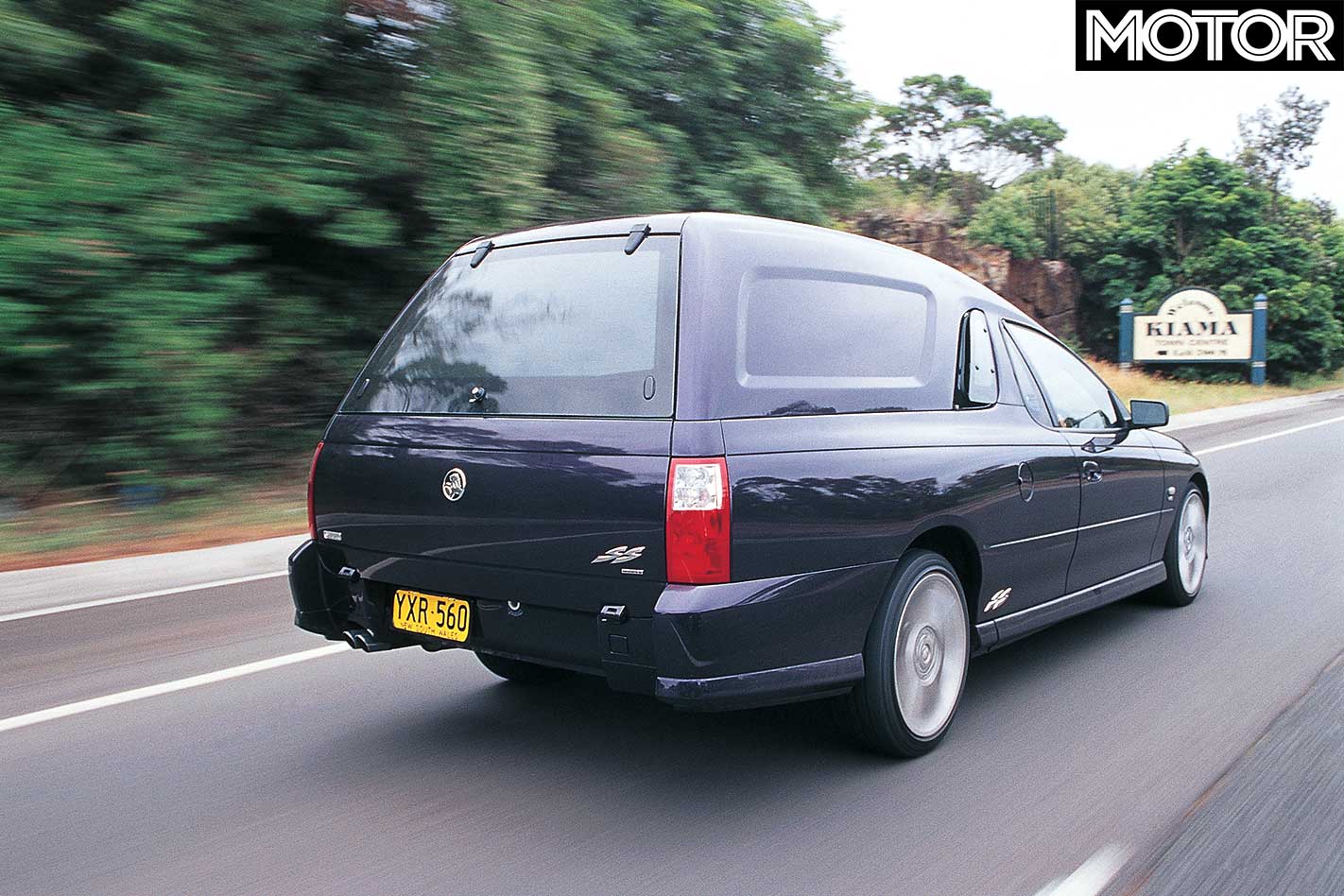
Many punters were fooled, however. Pointing out to our highly excited car-park attendant that it was really just a ute with high aspirations, he was dumbfounded and took several minutes to find the join line. But then he does work underground all day.
The most telling structural difference between the real thing and the new boy is the fact that the Ute’s rear screen is retained behind the front seats, which means there’s no access to the bit where the bed should be except through the rear tray. This also means you have to climb into the back to shut the strange pop-out rear windows.
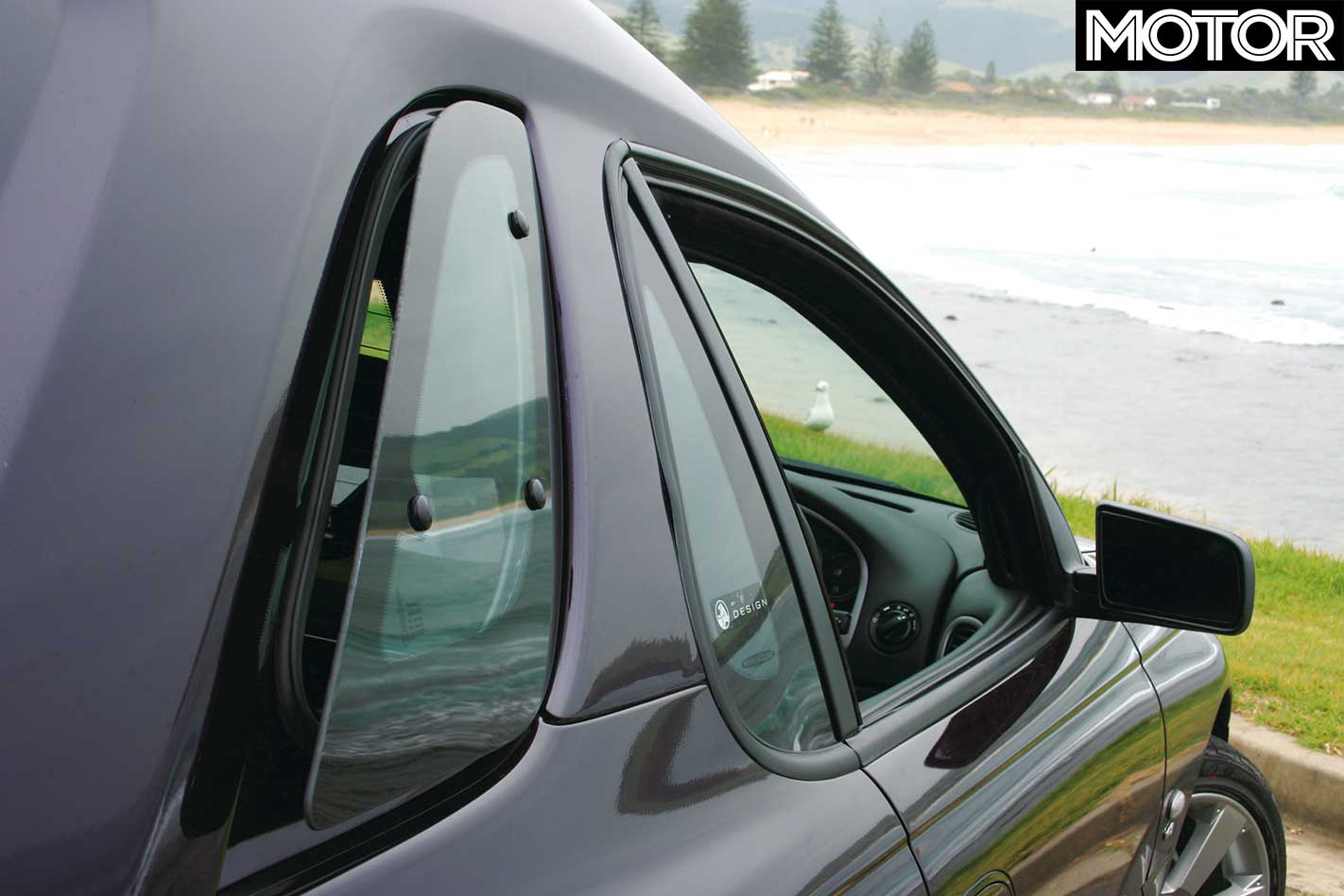
While playing with these, I paused to ponder whether I felt like I was in the back of a real panel van. Unfortunately, I did this on a 32-degree day and it merely made me realise that you don’t need to go to Sweden for a good sauna. How anyone could sleep past dawn in such a contraption is a medical marvel. Heat aside, the magic just wasn’t there; it still felt like a ute pretending to be a van. Perhaps it was the lack of velour on the walls.
There are other obvious differences from the classic vans of yore, like the drilled pedals and the fact that it’s got more cup holders than a Hooters convention.
Yet there were some striking similarities as well, like the fact that when you’re driving it you have all the peripheral vision of a man about to be executed by firing squad. You can see vehicles directly behind you, of course, but only if it’s a Hiace or higher. And I did get the almost irresistible urge whenever we drove past a spray-painting shop to rush in and get something barbaric or carnal painted on the side.
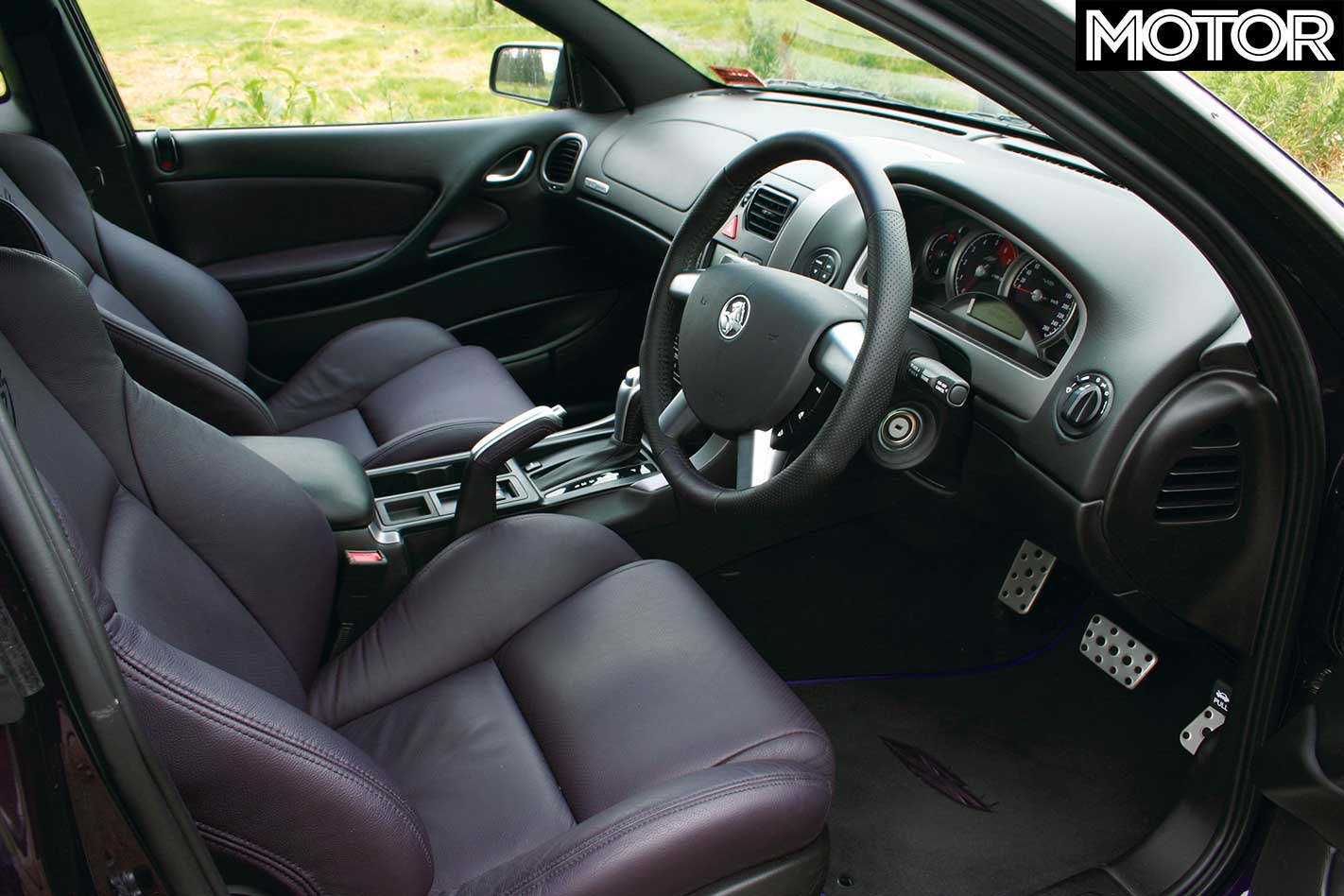
Still, something didn’t feel quite right. Perhaps it was the fact that I couldn’t roll down the rear window, Sandman style, and drive along sucking in the soporific fumes that made driving the original such a death-defying experience.
In terms of driving, the van felt slightly less exciting than a 245kW V8 should, but this was no doubt largely due to its being mated to GM’s woeful four-speed automatic gearbox, which is about as subtle as Kevin Bloody Wilson’s bucks night.
On the rare occasions that it was in the right gear at the right time, the big Holden donk did make all the right noises and it is capable of putting a smile on your dial, but give us the manual any day.
The extra bulk on the rear tray seemed to produce a rocking horse effect over speed bumps, but the way the back end stepped out in some corners suggested that it might still benefit from putting a mattress, and perhaps a very fat person or two, in the back.
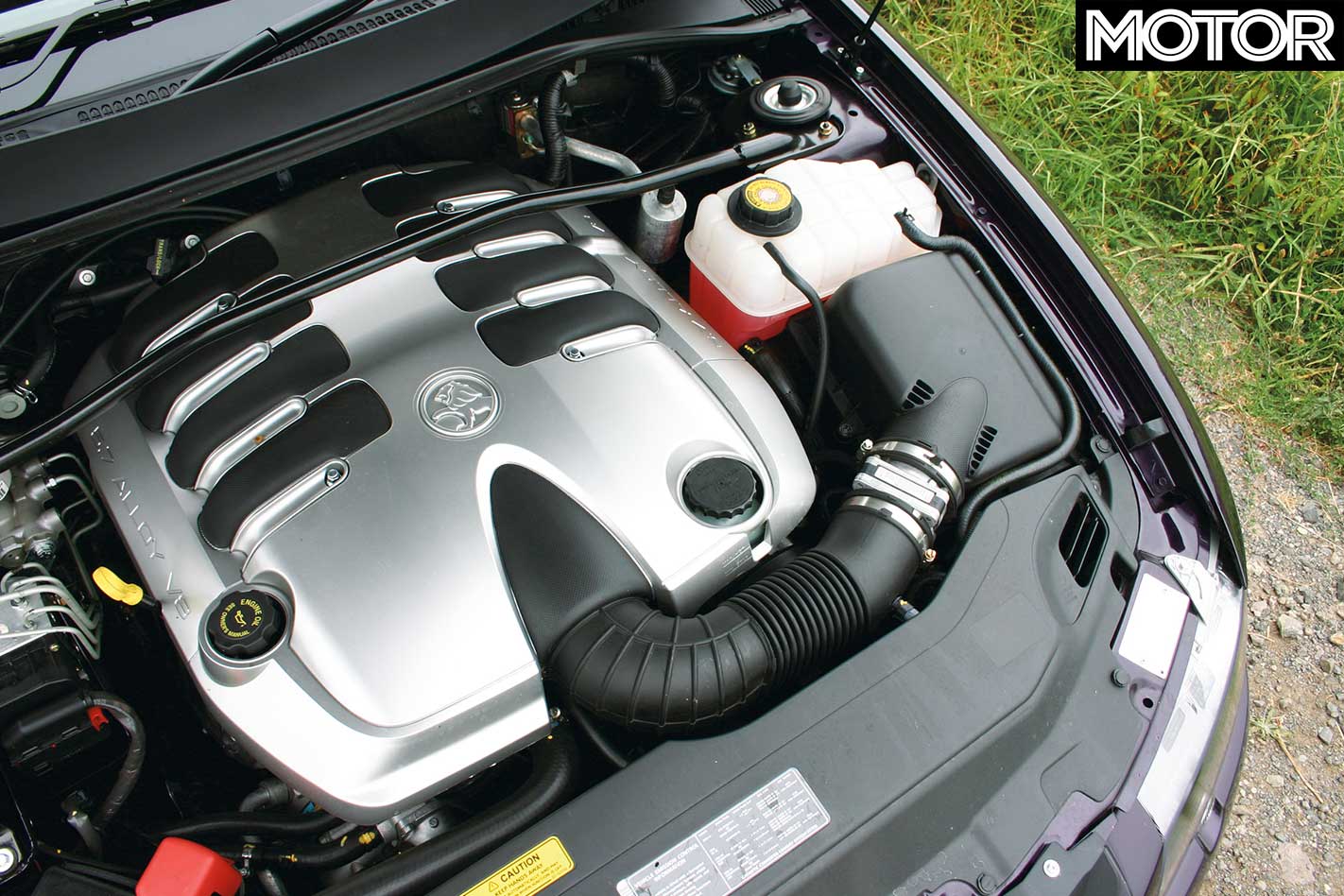
Still undecided on the van’s validity, we were lucky enough to run into a couple of young grommets who put the future success of the concept in clear focus.
Sam Leedham, 22, of Nowra, had to wipe slobber from his chin and tears from his eyes before giving us his concise opinion: “It’s f#&kin’ wicked.” After lapping it a few times, he added: “It would be better if you could wind down the rear window, like in the old one, and there shouldn’t be glass between the seats and the back, but I still want one. It’s so perfect for surfing and trips up the coast. I’ve never considered a ute because you can’t lock it up, so I’ve always had to buy station wagons. But this gives you the room of the ute with the security of a wagon.”
It’s hard to put it better than Sam did, really.

The new Panel Van, or Panel Ute, offers 2100 litres of secure rear cargo space – which is quite a few surfboards. It comes in purple. And no one can stop you painting the word ‘Sandman’ on the side and pretending you’re 18 again.
Let’s face it, it’s going to sell like hotcakes.
FAST FACTS 2004 Holden Panel Van
BODY: two-door ute with canopy DRIVE: rear-wheel ENGINE: front-mounted 5.7-litre pushrod 16-valve V8 POWER: 245kW @ 5600rpm TORQUE: 465Nm @ 4400rpm BORE/STROKE: 99.0mm x 92.0mm COMPRESSION RATIO: 10.0:1 WEIGHT: 1699kg POWER-TO-WEIGHT: 144kW/tonne TRANSMISSION: 4-speed auto SUSPENSION: MacPherson struts, coil springs, anti-roll bar (f); semi-trailing arm, coil springs, anti-roll bar (r) L/W/H: 5049/1845/1670mm WHEELBASE: 2939mm TRACK: 1569mm (f); 1587mm (r) BRAKES: 296mm ventilated discs, twin-piston calipers (f); 286mm solid discs, single-piston calipers (r), ABS WHEELS: 18 x 8.0-inch (f & r), alloy TYRES: Bridgestone Potenza, 235/40 R18 (f & r) FUEL: 70 litres, ULP PRICE: $48,950 (as tested)

